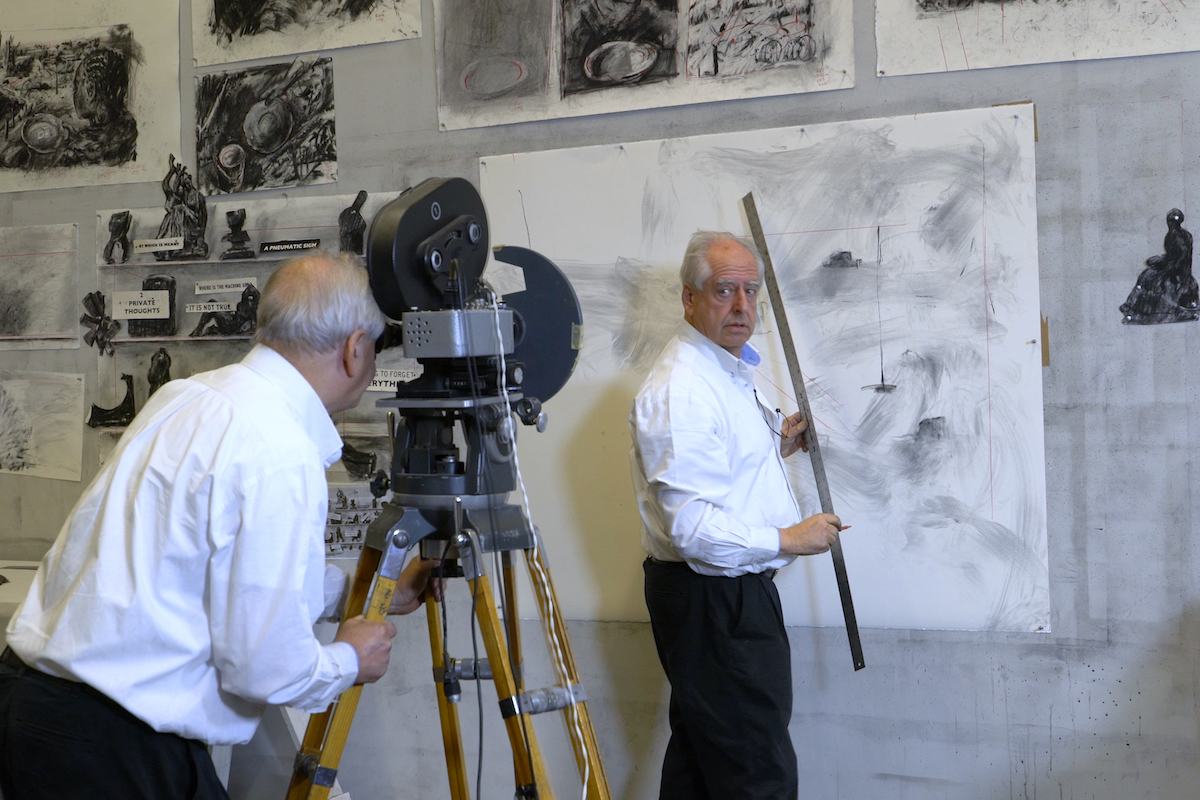In 1968, American sculptor Alexander Calder created Work in Progress for Rome’s Teatro dell’Opera. Set to an electronic score by Niccolò Castiglioni, Aldo Clementi and Bruno Maderna, it featured Calder’s monumental kinetic sculptures, which Marcel Duchamp dubbed “mobiles”, and colourfully attired cyclists who rode around the stage in circles and figure eights.
This psychedelic visualisation of the natural world fulfilled Calder’s desire to return to the theatre, having previously collaborated with choreographer Martha Graham, as well as composers Earle Brown and Erik Satie. Fifty years later, the Teatro dell’Opera decided to restage it alongside a companion piece commissioned from William Kentridge. The South African artist was keen to capture the “sense of turning, of revolution, and of the lightness of Calder”, as well as the spontaneous way the mobiles rotated.

William Kentridge. Photo © Stella Olivier.
Kentridge saw this as a metaphor for the uncertainty in life and he recalled the myth of the Cumaean Sibyl who presided over the Apollonian oracle outside Naples. Her prophecies were written on oak leaves that piled up outside her cave and were blown around by the wind,
so nobody knew if the fate they...










Comments
Log in to join the conversation.